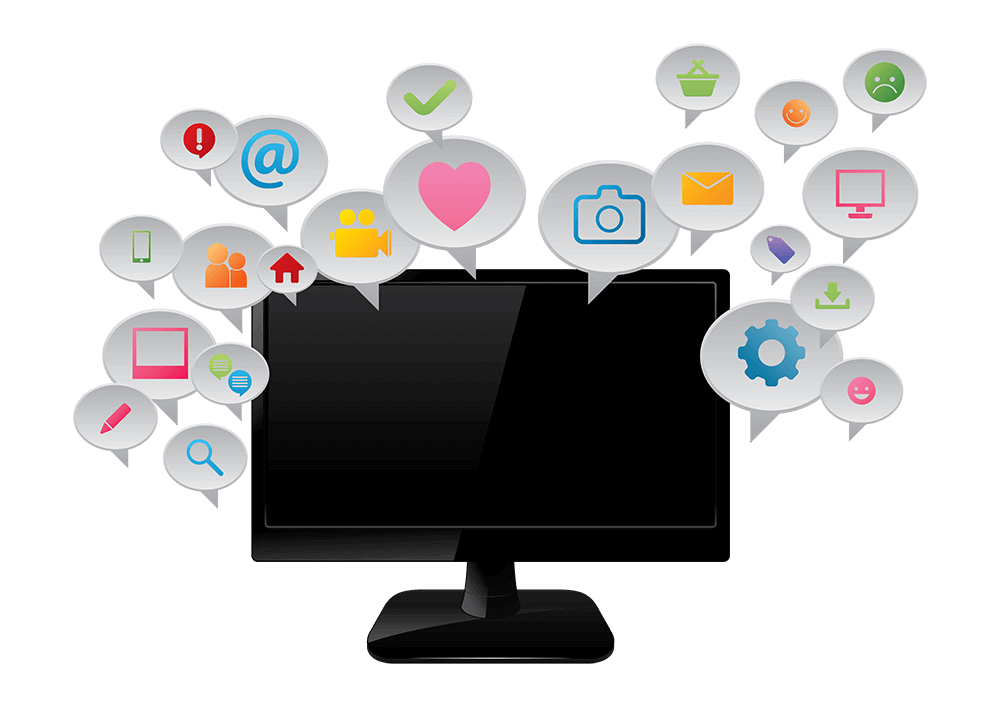April 3, 2020 |

Modern businesses have a plethora of requirements, needs, and necessary resources that must be in place to remain competitive within their region and market and to scale and increase their bottom line over time. This includes skilled personnel, comprehensive strategic plans, thorough business blueprints, a well-designed architecture, and a variety of robust tools, platforms, and IT infrastructure-based components, among other things. All of these elements help a business achieve its overarching goals and increase its productivity, efficiency, and bottom line. IT components or systems present a novel approach to completing critical workflows and projects, and is slowly becoming a mainstream corporate phenomenon: the use of Artificial Intelligence and Robots. Artificial Intelligence-powered robots can greatly aid a company with the completion of routine, mundane tasks, all with optimal efficiency speed, reducing overhead, project costs and time constraints for workflows, among other things. Smart robots can also help a business scale, reduce costs with regard to employing skilled personnel, and can help a business be more productive, efficient, and effective in the completion of core processes. Such significant advantages can help a company scale, broaden the products/services that are offered, and can aid in producing the best results with the best Return on Investment (ROI). However, perhaps the most significant advantage with using AI-powered robots is automation and/or assistance, the ability for businesses to automatically carry out the key, complex processes, either completely via robots, or with the help of robots. Both automation and assistance can greatly decrease project timeframes and costs. AI-powered robots have the power to radically transform how a business completes its short-term workflows, long-term projects, and can quickly result in a successfully scaled business with a better bottom line.
Diving into Definitions
Technology within the business ecosystem has evolved to make business operations easier and quicker and to decrease the budgetary requirements for completing critical business processes. When budgetary requirements decrease and operations become more feasible, a business can scale, grow its product lineup, deliver better service, and operate more efficiently and effectively. This results in higher customer satisfaction, higher productivity, and a better bottom and top line. While technology has evolved, the major purposes of utilizing technology within businesses have not.
Most business IT infrastructures are composed of seven major components:
-
Enterprise Suites
-
Hardware Systems
-
Software Systems
-
Networking Systems
-
Data Systems
-
Web Assets
-
Mobile Systems
Numerous inventions among these systems have made business operations easier within businesses of all sizes:
-
-
Desktop Workstations
-
Email
-
Fax Machines
-
Tablets
-
Smartphones
-
Cloud Systems
-
Artificial Intelligence systems
-
Artificial Intelligence is not a new technology. Rather, the advanced implementation of modern AI-systems is a novel way to allow machines to operate like intelligent humans to carry out complex tasks. In this context, AI usually refers to software systems and/or enterprise-level applications that businesses use to automatically parse complex datasets, analyze Big Data, carry out critical business tasks, and much more.
Modern Artificial Intelligence varies greatly in how it is applied, as it can encompass chatbots, data analytics suites, robot-enhancements, medical AI systems, and much more. However, most modern AI systems utilize three core components:
-
Machine Learning: The ability for computers to reprogram their foundational algorithmic code in order to “learn” and become better at tasks over time.
-
Deep Learning: The ability for computer systems/machines to “learn from experience” by utilizing machine learning (ML).
-
Neural Networks/Algorithms: A software “cyberbrain” of sorts, AI-powered software applications, and robots are modeled after the human brain and its millions of neural circuits, which in AI are based on complex code or “algorithms.”
Robots entail complex hardware systems that are made to replace human labor for the carrying out of critical tasks, which requires intelligence. Hence, modern robots – such as machines that build cars, or humanoid robots that aid with military operations – are usually powered by advanced AI systems, which allow them to operate like a human being. The main advantage of using AI-powered robots is the ability to automate tasks that might be costly, time-consuming, and difficult for human personnel, thus cutting costs and time requirements for processes and projects.
Huge Strides in Work Technology
As noted by Stanford, according to the Robot Institute of America (1979), a robot can be defined as “a reprogrammable, multifunctional manipulator designed to move material, parts, tools, or specialized devices through various programmed motions for the performance of a variety of task” (“Robotics: A Brief History”)[1]. All basic and complex robots use a variety of sensors to sense and manipulate the surrounding environment, and are composed of three factors:
-
Sensors: Complex systems that allow the robot to interact with the environment.
-
Actuators: The motors and/or gearbox that powers robots.
-
AI: The robots’ software cyberbrain that gives it human-like intellect.
Contrasting the advanced humanoid robots associated with futuristic, fictional media, robots of the past and throughout history have been basic, automated, non-humanoid machines that have been used to automate the completion of basic tasks. One of the earliest modern robots was invented by George Devol in the 1950s and was a reprogrammable, automatic manipulator called the “Unanimate” or “Unimate,” which welded auto bodies. Robots evolved largely from this precursor robotic ancestor, and have been used largely in factories and labs for automatically performing mundane, tedious and even dangerous tasks with a high amount of detail, precision, speed, and efficiency. Welding bodies, lifting objects, crafting parts, separating objects, pulling cargo/materials, etc. have been the standard “jobs” of the robots of history, which have always been stationary, albeit intelligent, non-humanoid machines (“The WIRED Guide to Robots”).
From the mid-1980s, companies started to create robots that are closer to being “humanoid,” with the ability to carry out virtually any task that a human being can, though to a lesser extent. Honda developed P3, which was capable of interacting with people and moving like a human. Then came Asimo, the advanced bipedal robot. Later, as sensors became more advanced, systems like Lidar and Machine Vision came into play, which allowed more novel robots to be invented to complete numerous tasks:
-
Driving (self-driving cars)
-
Performing Surgery or assisting with surgery
-
Building and manufacturing parts for automobiles, phones, computers, etc.
-
Delivering parcels
-
Writing articles/novels
-
Aiding police and/or military with operations
-
Identifying unique or critical targets
-
Mixing and compounding pharmaceutical medications/drugs
-
Agricultural robots that can help keep crops safe
-
Library robots that can aid in upkeeping and maintaining libraries
-
Welding and manufacturing complex machinery (including other robots)
-
Inspecting aircrafts
-
Scrubbing floors of industrial warehouses
-
And much more…
Today, more humanoid robots are being invented which can walk, run, greet and meet people, carry weapons, and use high-levels of intelligence to move in the environment and carry out tasks like a human being. Robots are quickly becoming a norm in several industries, including agriculture, healthcare, manufacturing, maintenance, sports, and more.
According to statistics, robots and AI-powered robotic systems are the future of business. Robotiq notes, as recorded by various surveys and studies, several significant finds on the growing ecosystem of business robotics:
- “Only 15 percent of businesses use AI today, but 31 percent plan to add support for it over the next 12 months (according to Adobe’s 2018 Digital Intelligence Briefing).”
-
“According to Loup Ventures research, the industrial robotics market is expected to grow by 175% over the next decade… the same Loup report states that 34% of the industrial robots sold by 2025 will be collaborative – designed to work safely alongside humans in factories and plants.”
-
“ABI Research predicts the collaborative robotics market will surge to $1 billion in total revenue by 2020, with over 40,000 cobots entering the industry.
(“10 Key Robotics Statistics You Need to Know,” 2018; Robotiq)[3].
While most stats point to cobots (collaborative robots) entering most industries over the next decade, the fact is that robotic systems are game-changing, valuable business tools that businesses the world over are adopting and implementing to scale and remain competitive.
Agriculture
In the realm of agriculture, the Ecrobotix system is a Swiss, solar-powered robot that can precisely identify and treat weeds among farms and crops, thus giving farmers the ability to grow weed-free crops and to be more precise, efficient, and productive. Other robots are capable of hoeing, taking out weeds, and assisting with harvesting.
Manufacturing
As the first modern robot, the “Unanimate” or “Unimate” robot of 1956 was used as an automation machine to extract die castings from machines and to carry out spot weldings in General Motors. Many factory-based assembly robots are based on this ancestor robot.
Other manufacturing/support robotic systems, such as the Arduino Braccio Robotic Arm, act as a third extendable, flexible, and robust arm that can support a variety of objects for mounting, including cameras, solar panels, and more.
Utility & Maintenance
Several utility and maintenance robots exist to aid businesses with a variety of tasks, such as the Global Automatic Floor Machine, which is used as an industrial floor scrubber (used in Walmart stores for example), and the Air Cobot, a French manufactured robot that collaborates with a human to inspect the lower half of aircrafts during maintenance operations via a myriad of advanced sensors.
Healthcare
Robot-assisted surgery is a type of surgery used in semi or minimally-invasive surgery for patients, where doctors are aided by robotic systems to complete precise medical procedures. While robot-assisted surgery is becoming a norm, robots that are able to precisely perform surgeries on their own are coming to fruition.
Also in the medical industry, robots such as the Luna Rehab robot are used for a variety of purposes, namely to aid in the physical therapy of patients via neurorehabilitation. The Luna EMG robot uses reactive electromyography to train a patient’s neuromuscular system and to aid in their recovery. This allows precise recovery programs for patients while giving doctors more time to carry out other tasks.
Impacts in the Workplace
Robots of all types have the capabilities of profoundly impacting business as usual, with regard to short-term workflows and long-term projects, and even how strategic plans (long-term blueprints) are made at the inception of a business start-up. Robots mainly allow a variety of mundane tasks to be automated, while also giving workers the ability to finish their tasks alongside robotic aids (i.e. assistance) in a more optimal, precise, and quick manner. This results in increased speed, safety, and productivity, a large competitive advantage within the region and/or market that a business operates in, and at substantial savings.
Robots can aid every level of business members with their tasks, from the CEO (i.e. making strategic decisions based on a robot’s data analysis) to the CMO (i.e. helping marketers identify new leads and aiding in increasing conversion rates), to the CDO (i.e. aiding with data analysis), to the CFO (i.e. allowing a business to have a more liberal budget), etc. Robots can theoretically complete any task that a human can complete, from manufacturing, driving, delivering, moving, and much more, which offers a business of any size, unprecedented opportunities.
INCREASE IN PRODUCTIVITY & COMPETITIVE ADVANTAGE
Automation is the new norm in businesses of all sizes. Automation allows a machine to consistently offer optimized, precise results with any task or project (whether it be simple or complex, mundane or varied), which reduces production time, reduces financial costs/resource requirements and gives employees more time to focus on more critical workflows. Essentially, personnel can do more stimulating jobs to accomplish more, while working less. And smart robots that utilize ML can aid a company with completing tasks in a novel, more productive way, via their use of advanced Artificial Intelligence.
Financial Savings
Robots essentially pay for themselves, as their quick ROI results from how much they can aid a company in being more productive and increasing their bottom line. While the initial investment of a robot may be somewhat high, robots don’t take breaks or get sick, or take paid leave. While robots need upkeep and maintenance, a well-designed, robust robot should be able to work consistently and seamlessly within any company.
Speed and Safety
Several jobs put workers in dangerous or very hazardous conditions, which often requires high insurance premiums, along with accidents and safety issues. Robots are unique in that they can quickly carry out simple or complex tasks without anyone having to worry about their safety, which means lower insurance/workers compensation issues, and fewer accidents.
Do You Really Need Robots For Your Business?
Businesses of all sizes, who wonder whether robotics is a good fit for their company, can determine whether such smart bot systems can aid their company by asking themselves several questions, all centering on whether integrating robotics into their business will allow them to be better off:
-
Is the task at hand impossible for a human to accomplish?
For instance, several jobs require difficult or impossible tasks and/or maneuvers that a robot could feasibly accomplish. Examples include going deep diving, accessing extremely tight spaces, lifting heavy objects, etc.
-
Will the task be risking your employees’ lives?
Some jobs expose workers to hazardous conditions or environments. Examples include exposure to hazardous chemicals, extreme temperatures, loud sounds, etc.
-
Is the task involved repetitive and does not require critical thinking?
Unstimulating and routine tasks tend to dull a human’s mind, leading to poor productivity/efficiency, low morale, low motivation, lower creativity, and fatigue, among other things. Robots, on the other hand, do not get tired, and do not suffer from fatigue and/or low morale, and are perfect for automatically completing routine tasks.
-
Does the task require extreme precision?
Several jobs are prone to human error, despite requiring near-perfect precision in order for a high-quality product to be produced. This includes the manufacturing sector, assembling of electronics and automobiles, and more, all of which could greatly benefit from robotic systems and their near-perfect precision.
-
Does the task require large workforces to do the same task?
Jobs that have large numbers of workers carrying out similar processes can be completed en masse by groups of robots, who can finish such tasks quicker, with less error, and with more precision, giving personnel the ability to carry out more critical tasks.
-
Will the task require a high volume of data processing?
Certain tasks require the processing and parsing of enormous amounts of data, whether it be scanning barcodes, processing credit cards, inputting data into databases, and more. High-volume data processing is typically mundane and comprehensive enough to be prone to human error. Such processing workflows are perfect for a robotic system that is precise and fast.
Are You Ready to Integrate Robots into Your Place of Business?
The decision to integrate smart robots into your business is a critical decision that could radically alter how your business carries out its workflows, projects, short-term planning, and strategic implementations. Robots are a valuable investment that can greatly increase a company’s bottom – and top – line and can aid workers, or replace certain personnel in completing mundane tasks while automating the completion of other critical processes within your company. Due to being fast, efficient, error-free, and devoid of human safety issues, robotic systems can be the next IT component to add to your company’s IT infrastructure in order to optimize all of your operations with a maximum ROI.
Found this post useful?
Check out a wealth of knowledge you may apply to your business.
Make a great first impression at your next job interview.
BROWSE OUR JOB BOARD TODAY!
This blog post is intended for informational purposes only and does not constitute legal advice. No attorney-client relationship is created between the author and reader of this blog post, and its content should not be relied upon as legal advice. Readers are urged to consult legal counsel when seeking legal advice.








